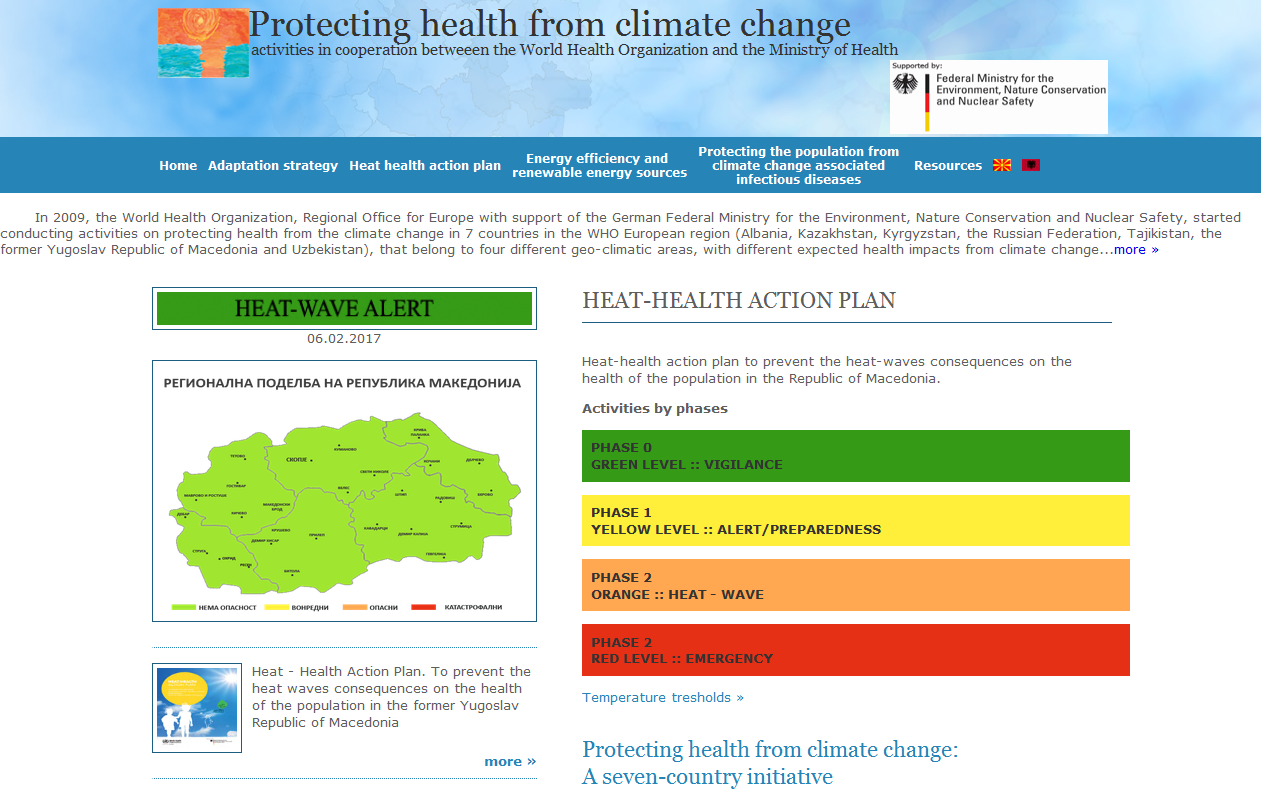The institution with overall responsibility for implementing the Heat-Health Action Plan is the Ministry of Health. Within the Ministry of Health, the Commission for Monitoring Heat-Health Consequences has been operational since July 2007, while the Climate Change and Health Commission was established in June 2009. Both commissions participated in the preparation of the HHAP and they cooperate in the implementation, monitoring and evaluation of the Plan. The Climate Change and Health Commission functions as coordinating body and it is responsible for the involvement of other institutions during the implementation of the activities outlined in the Plan. The Commission for Monitoring Heat-Health Consequences oversees practical implementation of the activities, especially those connected with the provision of timely information to the citizens and health workers. It is recommended that when necessary, people from other relevant institutions participate in this Commission and in the Plan implementation. To this regard, relevant institutions and other actors include: the Public Health Institute and Public Health Centres, the Occupational Health Institute, the Crisis Management Centre, the Hydro meteorological Institute, the Directorate for Protection and Rescue, the Departments for improving the living environment within the municipalities, the Ministry of Transport and Communications, the Ministry of Labour and Social Policy, the Ministry of Education and Science, the Macedonian Red Cross, the Media and, finally, the non-governmental sectors.
In the current implementation phase this collaborative approach has proven to work efficiently. For instance, in order to strengthen preparedness for crisis situations and climate change related emergencies, the last simulation exercise took place on 21th November 2018, in Kumanovo. The key involved institutions were the Ministry of Health, the Strumica General Hospital (an important regional hospital centre), the Emergency Medical Services, the Crisis Management Centre, the Red Cross, fire-rescue units, the Ministry of the Interior, the Ministry of Defence and the World Health Organisation. Prior to the simulation exercise some preparatory meetings were held to establish the parameters of the exercise such as expected casualties, trigger indicators for activating the emergency response plan, triage and patient traffic flow as well as the responsibilities of hospital and emergency medical services staff. The simulation allowed the authorities to test general preparedness.



